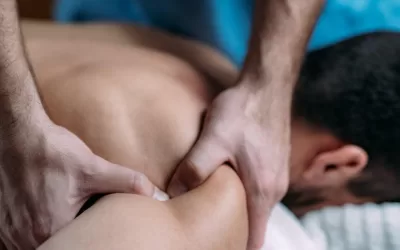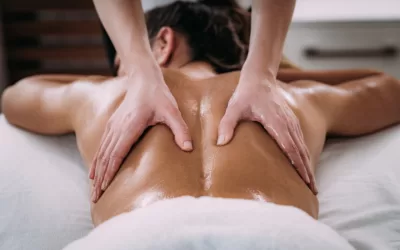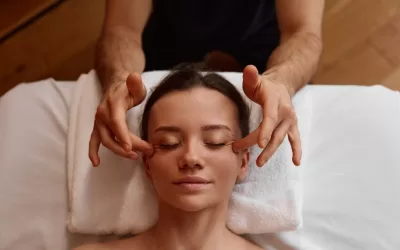Many of our pains are simply a result, like I’ve said before, of our typical patterns perpetuating themselves. To reduce the discomfort we need to remember three things:
1. Break habits
2. Move differently
3. Stillness is dangerous
Let’s briefly look at 3 popular postural models to separate what’s useful from what’s not and move into better physical health. Here are three unhealthy models that are widely used by laymen and professionals alike:
Unhealthy Postural Models
1. Spine as a Column. The spine in and of itself isn’t made to “bear the load” of the upper body as a “column” suggests, so referring to the spine as a column is a misnomer and an unhealthy visualization. You don’t want to hold your spine stiff and rigid – unless you’re carrying an extraordinary load. Many professional sitters have found a place of good posture that makes their back pain feel better, for a short while. Ergonomic or “good posture” solutions that we are taught are often stagnant positions that aren’t natural, but that’s changing thanks to new studies and tests. The industry is changing from static solutions to healthy ranges of movement as medicine. “Good posture” is hard to sustain for very long because it is often a one size fits all solution, rather than the solution that fits YOUR body. Not a good thing.
Solution: What is the spine then if it isn’t a column? Due to the sheer number of joints and anatomical connections, the spine is much more suited for movement and dynamic function than for static posture. This is the case for the body in general. Like I mentioned earlier, when the body is under a large amount of load, posture plays an important role; the spine (and more importantly your entire body) should engage and stabilize to bear the weight. In this scenario misalignment is not a good option, but in non-weight bearing activities, intentional slouching can be really useful! Go from ramrod stiff to micro-movement brilliant.
2. Neutral. There is research out there about the benefits of keeping a neutral spine. It’s a good attempt to protect the spine from injury, but it can imprint mental tags of fear and apprehension and at the same time doesn’t readily invite the large variety of movements that the spine is capable of. In the long term, this results in a less healthy, less mobile, less capable spine.
Solution: Neutral is a position, but not the only position. Again, in lifting heavy “neutral” could be good, but don’t put mental and physical limits to a system that is created for multi-function. A healthy spine is one where you can, and often do, explore your entire range of motion.
3. Core Stability. There are a lot of great movement programs out there that preach core stability so why would I add it here if I think they’re great? First let’s look at the positive: I do think that core training has great therapeutic value. However, there are differing ideas about what that new strength really does, or even if strength in the midsection is the true cure for back pain. In some instances, creating core stability is actually detrimental to your back. Much good scientific research concludes that the benefits of core strength that we so often profess is a myth. Still I side with some strength is better than none.
Solution: In the future I’ll write about core stability but progressive PT’s and Pilates instructors are great resources in developing a better functional core, keyword “functional.”
Be Body/Brain Brilliant!
Finding Center: A Core Concept to Reduce Back Pain
Center: A Core Concept
In my practice, I first introduce my clients to the concept of center. This helps liberate them from stiff or neutral spine models they may have in mind and gets them thinking and living from supportive, responsive, and active soft tissues. Center is a feeling you find within yourself, rather than a posture, which is more of something you do. That “feeling” is a place of lightness, ease, and accessible adaptation. To feel your center may require movement and adjustment, however subtle or grand. For instance, when sitting, if my legs are straight out in front of me “center” will be different than when my legs are bent and my feet under me. “Good posture” is a vision of a perfect place classically referring to the alignment of ear, shoulder, hip, knee, and ankle. Center is a more natural coordination of major body segments, where the body segment centers of gravity align may or may not necessarily align. This is because center isn’t a linear model, again, it’s a feeling you find. Finding center is not about constantly being in that alignment, it’s not about perpetual posture, it’s about that experiential feeling within that you use to explore the full range of movement that you’re capable of and after you’ve visited the extremes an easy center becomes apparent and available.
7 Felt and Functional Benefits of Finding Center:
1. Breath easily moves in and out.
2. A feeling of length, lightness, and ease.
3. Movement in all directions is available.
4. More vitality, less heaviness.
5. Senses are more engaged. Behind you, above you, below you and to the sides of you become just as important than what is in front of you.
6. Freedom from the designated shape of the environment (i.e., chair, couch, bed, etc.). Whoever built that thing you’re in right now did not have your well being in mind, believe me.
7. The ability to move bony segments from within.
If You Have a Body, Consider Yourself an Athlete
I like to give you models that help you visualize the potential of the spine in static positions and in dynamic movement. Visualizations that are simple but close to reality help you better understand the exercises and how to apply movement in more subtle but sophisticated and powerful ways. Usually the first hurdle is to erase the concept that the spine is a static & stiff column. Imagine your spine it isn’t a solid column in the back; each vertebrae is three dimensional and has multiple points of contact to various anatomy around it. (Imagine a single vertebrae, its shape is complex and really sophisticated, now think of a column it’s a simple shaft, extremely different functions). With that in mind, I hope that visual alone helps you to explore more dynamic spinal movements. Begin your movement journey by feeling or getting a sense of your spine through movement, without needing to touch it directly. Explore what center feels like to you. Center is not to be overly engaged or overly disengaged. Center is not static, it is present and responsive, breathing and moving.
I like the idea of center for two reasons:
1. It motivates you to think and move from within. Cueing “center” sparks an important inner dialogue we so rarely move from. Finding center invites an internal quest that is usually the realm of athletes or people who “use” their bodies. But, who doesn’t use their body?
2. At the same time center helps to create a felt relationship between it and the external body. The idea and feeling that the center and circumference are interacting is a novel one. Center is a vertical reference that seeks a sense of equal distance from the body’s external. In discovering it you might find yourself making internal shifts that better help you feel your body. Search for the relationship of center to circumference. An experiential sense of the inner and outer bodies is a visualization to enhance dimensional exploration. My scientific colleagues may not agree with my words here, these are the things athletes, martial artists, musicians, and dancers explore. Their learned grace is a science not particularly measurable or well defined.
Life in three dimensions is our physical reality, but we often subjugate ourselves to two – forward and back, as if the world is only in front or behind us. In the human zoo, it’s popular to live a forward back existence, with rotations, waves, spirals, and rolls saved for childhood nostalgia.
I propose more intentional movement. Intentional movement that is three dimensional. Think of the spine to moving on multiple planes at once, like a Gyroscope.
A well balanced spine should be able to respond in various directions. Obviously there is more physical ability to bend forward than back but within its given potential spinal movements should be accessible in all directions.
Sitting can be a cause of our symptoms or perhaps a solution to them. It’s not sitting itself that is so problematic but our lack of understanding of how much movement we can actually get while sitting. If you’re a pro sitter, break out of the human zoo. Find freedom in the confines of your cubicle. Listen to your body and when pain signals arise take them as a cue to move. Frequent short breaks that incorporate walking are great, but don’t dismiss precise movements because it could very well be that quality movements that break your habit patterns are more therapeutic than big motions confined to old boundaries.
For professional sitters, aka, chair warriors, chair wounds aren’t uncommon. My first line of healing is to get clients moving. Micro and macro movements should replace no movement. Fidgeting may be your body’s natural inclination to move, don’t be embarrassed by spontaneous restlessness. Chair dance. Unleash your wild indigenous single nature, don’t suppress suppleness. Move and dance from within.
Be Body/Brain Brilliant!




